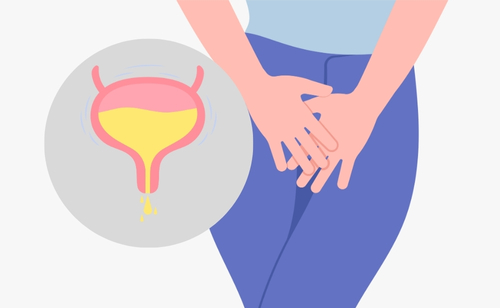
Menopause is a natural stage of life, affecting every woman at some point. It can bring uncomfortable changes, especially regarding bladder control and bladder issues. Urinary incontinence (losing bladder control) can take a toll when it impacts your day-to-day life. In this article we look at the relationship between menopause and the bladder, the issues, symptoms and the treatments.

Menopause is when a woman’s menstrual periods stop permanently (12 months since last menstruation), typically occurring around the ages of 50 to 55. It is marked by a natural decline in reproductive hormones (oestrogen and progesterone).
The reduction in these hormones can cause a range of symptoms from physical symptoms like hot flushes, to mental or emotional symptoms disrupting sleep or mood. Bladder issues are common for women going through menopause and in life after menopause – to the point where some women accept it as an inevitable part of aging.
One of the common issues that women face is bladder control or urinary incontinence. This is due to two primary factors, falling oestrogen, and advancing age. Oestrogen is the primary female sex hormone, produced by a woman’s ovaries. Along with being important to sexual and reproductive health, it also affects the pelvic muscles and urinary tract.
Here are some of the ways menopause may cause issues with bladder control:
Pelvic floor muscles lose strength when oestrogen levels drop. This affects both the bladder and can result in less control of the urge to use the toilet.
The tissue of the bladder becomes less elastic or flexible, affecting its ability to expand as if fills with urine. It can become more sensitive, leading to it emptying before filling.
Vaginal dryness caused by the drop in oestrogen, affecting the vagina, vulva and urinary tract. This causes the thinning and weakening of tissue.
Weight gain is a common issue during menopause. Significant weight gain can cause bladder and bowel control problems, straining the pelvic floor muscles.
During menopause women may begin to encounter issues relating to the health of their bladder. Here are the most common types:
Overactive bladder (OAB) is the term used for a range of symptoms including urinating more frequently, experiencing sudden urges to urinate, urine leakage or needing to urinate multiple times a night.
Stress urinary incontinence is urine leakage caused by triggers that put pressure on the bladder. Weakened muscles supporting the bladder and urethra can’t hold urine in causing leakage when you cough, sneeze, laugh, exercise, etc.
Urge incontinence is the term used to describe when a person experiences an intense and uncontrolled urge to urinate, even when the bladder is empty. In some cases, this can be followed by leaking of urine or uncontrolled urination.
Nocturia is the condition of waking up and having to get out of bed at night to urinate one or more times a night.
Increased risk of urinary tract infections, due to thinning of vaginal tissue, vaginal dryness and irritation caused by lower oestrogen levels.
There are a range of treatments and lifestyle changes available to women with bladder issues associated with menopause. These can help women to improve symptoms and control of the bladder.
Pelvic floor training, strengthening the muscles of the pelvic floor through exercises, can help to improve bladder control. For the best results, seek help from a pelvic health physiotherapist or continence advisor. You can find more information here on Healthify NZ (external link).
Bladder training aims to improve bladder control and increase the volume of urine the bladder can hold without leaking or urgency to urinate. There are programmes available from sources like Continence NZ (external link), which provide structured guides.
Lifestyle changes can be made in a variety of areas to manage symptoms, this could include:
Hormone replacement therapy may be offered to improve the bladder and urethra tissue, along with other symptoms of menopause. If symptoms are primarily related to the bladder or vagina only, vaginal oestrogen may be preferred.
Vaginal oestrogen can help restore vaginal moisture and elasticity. It is available in creams, rings, and tablets. Many women who use vaginal oestrogen find that it helps improve bladder function and continence.
Medical and surgical procedures may be considered if the changes above do not adequately resolve symptoms.
Talk to your pharmacist or healthcare provider if you are experiencing any of the issues listed above in this article.
Urinary incontinence and other bladder issues are normal for women going through menopause. Many of these symptoms or conditions can be managed or improved with treatment – allowing people to live a healthy active life with peace of mind.
New Zealand support & resources
Written by Paul Taylor
Paul Taylor is a New Zealand–based healthcare content writer with 5+ years’ experience creating patient friendly articles for online pharmacies and health platforms. He specialises in accessible condition guides, prescription FAQs, OTC advice, and health & wellbeing tips, translating complex medicines or health condition information into clear, actionable content. Paul collaborates with the ZOOM Pharmacy clinical team and bases every article on authoritative sources, peer reviewed journals and national clinical guidelines to ensure evidence based, up to date content. His goal is to help readers feel empowered to make informed decisions about their medicines and wellbeing. This content is general information only and does not replace professional medical advice.